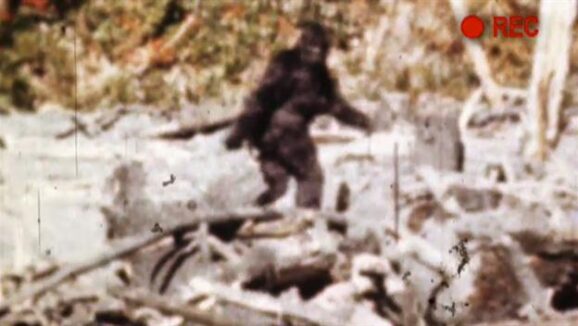DNA Analysis Casts Even More Doubt On The Existence Of Bigfoot
This article is more than 2 years old
 Never say die, Bigfoot believers! People will try to use this crazy thing called science to disprove the existence of the mythical beast, but what do they know? I’m just telling you about this latest bit of information so you can come up with a plausible explanation that supports the continued belief in Bigfoot, as well as the Loch Ness Monster, and UFOs. Here’s what you’re contending with now: DNA analysis reveals yeti hair samples to have come from dogs, horses, bears, and other common animals.
Never say die, Bigfoot believers! People will try to use this crazy thing called science to disprove the existence of the mythical beast, but what do they know? I’m just telling you about this latest bit of information so you can come up with a plausible explanation that supports the continued belief in Bigfoot, as well as the Loch Ness Monster, and UFOs. Here’s what you’re contending with now: DNA analysis reveals yeti hair samples to have come from dogs, horses, bears, and other common animals.
An international team of scientists collaborated to form the Oxford-Lausanne Collateral Hominid Project for the purposes of gathering and analyzing all of the samples of what could potentially be Bigfoot hair. The samples were collected over the past 50 years by hikers, hunters, and other folks who might have sighted the big B. The scientists focused on 36 samples of an initial group of 57, screening out some that weren’t hair and being sure to include ones with origins that matched other sightings. They extracted viable DNA from 30 of the 36, and sequenced a short segment, which allowed them to identify genus, but not differentiate between similar species (i.e., dogs and coyotes).
Of those, 8 came from bears (black and brown), 4 from canids of some type, 4 from cows, 4 from horses, 2 from raccoons, and one each from a deer, sheep, tapir, serow, and human. In other words, yeti hair seems to come from pretty run of the mill animals, although a couple of the bear samples seems to be closely related to Ursus maritimus, a polar bear from the Paleolithic era, roughly 40,000 years ago. Those two sequences were a perfect match for modern polar bears, which supports the idea that perhaps polar bears and yetis look pretty similar, especially during a mountaintop blizzard. It’s also possible, though not likely, that brown bears share DNA with polar bears, which suggests that polar bears migrated a lot farther than previously though.
Still, the researchers are quick to admit that “absence of evidence is not evidence of absence,” and that they’re study doesn’t necessarily disprove the existence of Bigfoot or yetis. They say that cryptozoologists and other believers simply have their work cut out for them if they want to prove that these creatures are real.
The study comes on the heels of a Virginia man’s claim that he took the first clear and incontrovertible photos of Bigfoot. I’m pretty sure it’s just Jimmy Hoffa, though.












